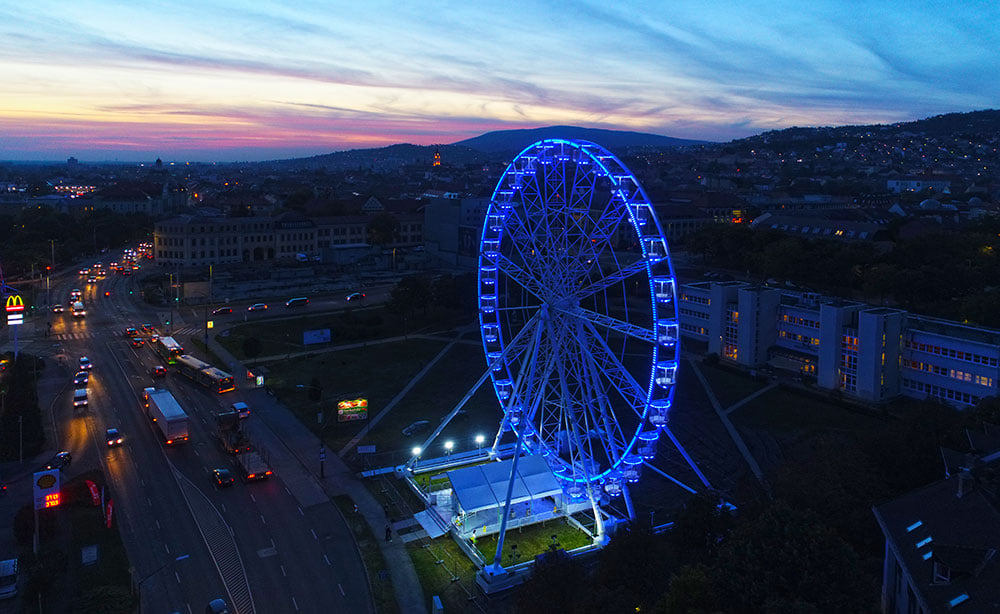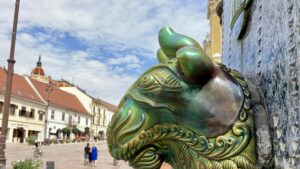A unique teapot collection, not only in Hungary but also a rarity in Europe, can be seen in Lapáncs, Baranya.
Valéria Dusnokiné Török has been collecting fashionable figurative teapots from England for six years, but she recently displayed the special pieces in an inherited peasant house. The private collection has a dual purpose: to showcase the occasionally peculiar tea-drinking habits of the English and to draw attention to the depopulated village.
Lapáncsa is located just nine kilometers away from Villány and is an hour’s drive from Pécs. This peaceful Baranya village gives home to around two hundred residents. However, recently, an exhibition opened in one of the village’s peasant houses that is guaranteed to bring a smile to visitors’ faces. Why? We’ll show you!
Hot water is pouring into our tea from a toilet bowl, a handbag, and Bill Clinton’s head. This is also a teapot. True, the English mostly used them for decoration.
Currently, we have exhibited 180 teapots in Lapáncsa, but we continuously bring more exciting and valuable pieces from England
Valéria Dusnokiné Török leads us around. She started collecting these far from ordinary pieces six years ago.
The first one was a modest house-shaped teapot.
Vali and her husband, Tibor, moved to England with their sons 11 years ago. Now, they come back to Baranya for the teapots, Lapáncsa, and relatives. They used to live near Budapest.
“These teapots have a history that dates back to the 1600s. Back then, they produced so-called toby jugs, which were human-shaped beer jugs used in taverns. Then they started shaping the taverns themselves, so tavern-shaped teapots also emerged,” explains the collector, tracing the origins
Newspaper, bread, and a small cup also find their way onto the lid of a teapot.
Every detail on these teapots is meticulously crafted. To me, the level of detail in this work is incredible
says Vali.
Near 200 teapots can be admired.
“We haven’t really encountered any negative or dismissive opinions about the collection. Instead, people are often astonished and wear a lot of smiles because it’s hard to look at these with a straight face, I think,” says Vali’s husband, Dusnoki Tibor, who wholeheartedly supports his wife’s hobby.
And what did the locals think?
At first, the locals received the exhibition with skepticism, but slowly, everyone has visited the Swabian peasant house that Vali and her family aim to preserve for posterity.
“We want to ensure that the village doesn’t depopulate but, instead, that people from the city come out to experience the tranquility that Lapáncsa can offer. In the company of teapots, it’s great to recline in the grass and enjoy nature,”
said Vali, who inherited the more than century-old adobe house from her grandmother.
The exhibition can be viewed by appointment. For more information, you can read about it here!

‘What do you want, a teapot museum?’ my mom asked, laughing, thinking I was joking. ‘I’ll give you two,’ she said, pointing to the Hollóházi teapots in the display case, along with another. At the time, she didn’t know that I had entirely different teapots, and that I was completely serious about what I was saying – as seen on the Lapáncsa teapot collection website’s introduction.

In England, they are decorations, but in Lapáncsa, the goal is to make visitors laugh and surprise them.

One of our favorite teacups features a man sitting on the toilet because no one would think that tea could flow from a toilet bowl.

Currently, there are 180-190 pieces on the shelf, but some are waiting in boxes to find a place – Vali’s husband outlines, and he doesn’t mind at all that their attic in England is also filled with teapots.













